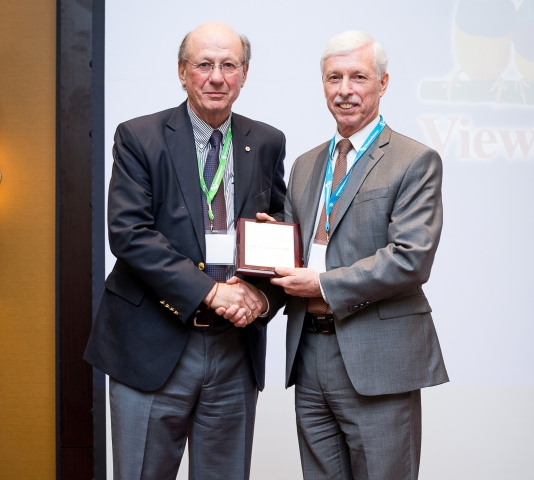College VP wins leadership award
Selkirk College Vice President of Education & Students Neil Coburn has been recognized for his commitment to strengthening transfer agreements and enabling student mobility in post-secondary institutions across the province.
Coburn was presented the Leadership Award from the British Columbia Council on Admissions & Transfer (BCCAT) at the organization’s inaugural awards event late last year. Coburn was singled out for his work to further the goals of the BC Transfer System and promote the mobility of students across the province.
“It’s an honour and very humbling,” Coburn says of the award. “There are hundreds of people who have spent decades working on the BC Transfer System to make it what it is, to be recognized for leadership is pretty special.”
Established in 1989, the BCCAT oversees the BC Transfer System, enabling important links between the BC post-secondary institutions. BCCAT facilitates admission, articulation and transfer agreements among BC post-secondary institutions for the benefit of students.
A Vital Part of a Post-Secondary Education
Coburn started teaching at Selkirk College in 1997, first in computer science and then mathematics. He started working on transfer agreements as a member of the BCCAT math articulation committee, one of more than 60 committees in the province that work on creating transfer pathways for students.
“Transferability is important for Selkirk College,” says Coburn, who became a department head and dean before being appointed college vice president in 2011. “Students need a broad range of educational opportunities and as a small institution we can’t offer them everything. It’s important that students are able to start something at Selkirk College and then successfully move somewhere else so they can access the programs they want.”
Every course in the School of University Arts & Sciences is articulated, enabling those who start at Selkirk College to seamlessly carry forward their educational goals at schools like the University of British Columbia, Simon Fraser University and the University of Victoria as well as many others.
Over the last 15 years, block transfer agreements have also been a main focus of BCCAT and have been highly beneficial to Selkirk College students. Block transfers enable graduates of two-year Selkirk College diploma programs, like Resort & Hotel Management, to move into the third year of study in degree programs at other institutions.
“The block transfers have become more important because degrees have become more important in employment than they were 20 years ago,” says Coburn, adding that every diploma program at Selkirk College has block transfer opportunities. “If you want to advance in your chosen career, you typically need a degree. After completing a diploma program at Selkirk College, graduates can move directly into continuing their education or they can work for a few years and then return to finish off a degree.”
A System that Works
Coburn was appointed by the Minister of Advanced Education to the BCAAT Council in 2008 where he has helped guide the work of the organization. Last year Coburn completed his second term, the maximum allowed.
While working with the Council on continually enhancing the system for all of British Columbia over the last six years, Coburn has in turn helped students in the region bolster their educational opportunities.
“Selkirk College benefits because if we have good pathways that means students can start here and go somewhere else,” says Coburn. “The way to make that work is to make mobility easy and one of the mechanisms to make that easy is a good transfer system. The BC system is probably the envy of every other jurisdiction in North America.”
In total there are more than 80,000 course transfers in British Columbia and all can be found on the BCCAT website (bccat.ca). Mapping out pathways for students can be done with the assistance of Selkirk College counsellors who can help connect the dots.
“I’m not sure if people realize the extent and the effectiveness of the transfer system in BC,” says Coburn. “We can help students learn about where they want to go because you don’t always know that when you start out. If you don’t know what pathway to take, or even if you do, it’s much less expensive to get a start here rather than going off to a bigger city.”






















